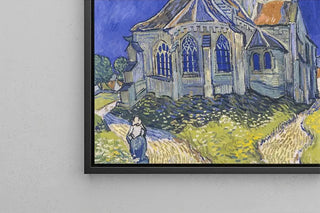Painting The Departure of Aeneas from Carthage - Alessandro Marchesini | Art print


View from behind

Frame (optional)
The Departure of Aeneas from Carthage: An Epic Journey into the Unknown
The painting "The Departure of Aeneas from Carthage" by Alessandro Marchesini depicts a pivotal moment in the Virgilian epic. The dynamic composition features Aeneas, the Trojan hero, about to leave Carthage, surrounded by expressive figures and a vibrant maritime landscape. The warm sunset colors blend with darker shades, creating an atmosphere that is both melancholic and hopeful. Marchesini's technique, blending realism and romanticism, captures the intensity of human emotion, inviting the viewer to feel the weight of absence and the anticipation of an uncertain future.
Alessandro Marchesini: a master of Italian romanticism
Alessandro Marchesini, active in the 19th century, is often associated with the Romantic movement that marked that era. Influenced by artists such as Delacroix and Turner, he skillfully incorporated powerful narrative elements into his works. Although less known than some of his contemporaries, his work reflects the importance of emotion and nature in the art of his time. "The Departure of Aeneas from Carthage" perfectly illustrates this quest of the human soul in the face of adversity, while fitting into an artistic tradition that values visual storytelling. Marchesini thus contributed to enriching the Italian artistic heritage with his poignant interpretations of classical literature.
A decorative piece with multiple assets
Choosing an art print of "The Departure of Aeneas from Carthage" is a way to add a touch of elegance and depth to your interior. Whether in a living room, office, or bedroom, this artwork catches the eye and sparks conversation. The quality of the reproduction guarantees remarkable fidelity to the original details, allowing you to feel the full emotional power of the piece. With its aesthetic appeal and rich history, this canvas becomes a decorative element that enhances the space while inviting reflection on universal themes of travel and exile.

Matte finish

View from behind

Frame (optional)
The Departure of Aeneas from Carthage: An Epic Journey into the Unknown
The painting "The Departure of Aeneas from Carthage" by Alessandro Marchesini depicts a pivotal moment in the Virgilian epic. The dynamic composition features Aeneas, the Trojan hero, about to leave Carthage, surrounded by expressive figures and a vibrant maritime landscape. The warm sunset colors blend with darker shades, creating an atmosphere that is both melancholic and hopeful. Marchesini's technique, blending realism and romanticism, captures the intensity of human emotion, inviting the viewer to feel the weight of absence and the anticipation of an uncertain future.
Alessandro Marchesini: a master of Italian romanticism
Alessandro Marchesini, active in the 19th century, is often associated with the Romantic movement that marked that era. Influenced by artists such as Delacroix and Turner, he skillfully incorporated powerful narrative elements into his works. Although less known than some of his contemporaries, his work reflects the importance of emotion and nature in the art of his time. "The Departure of Aeneas from Carthage" perfectly illustrates this quest of the human soul in the face of adversity, while fitting into an artistic tradition that values visual storytelling. Marchesini thus contributed to enriching the Italian artistic heritage with his poignant interpretations of classical literature.
A decorative piece with multiple assets
Choosing an art print of "The Departure of Aeneas from Carthage" is a way to add a touch of elegance and depth to your interior. Whether in a living room, office, or bedroom, this artwork catches the eye and sparks conversation. The quality of the reproduction guarantees remarkable fidelity to the original details, allowing you to feel the full emotional power of the piece. With its aesthetic appeal and rich history, this canvas becomes a decorative element that enhances the space while inviting reflection on universal themes of travel and exile.






